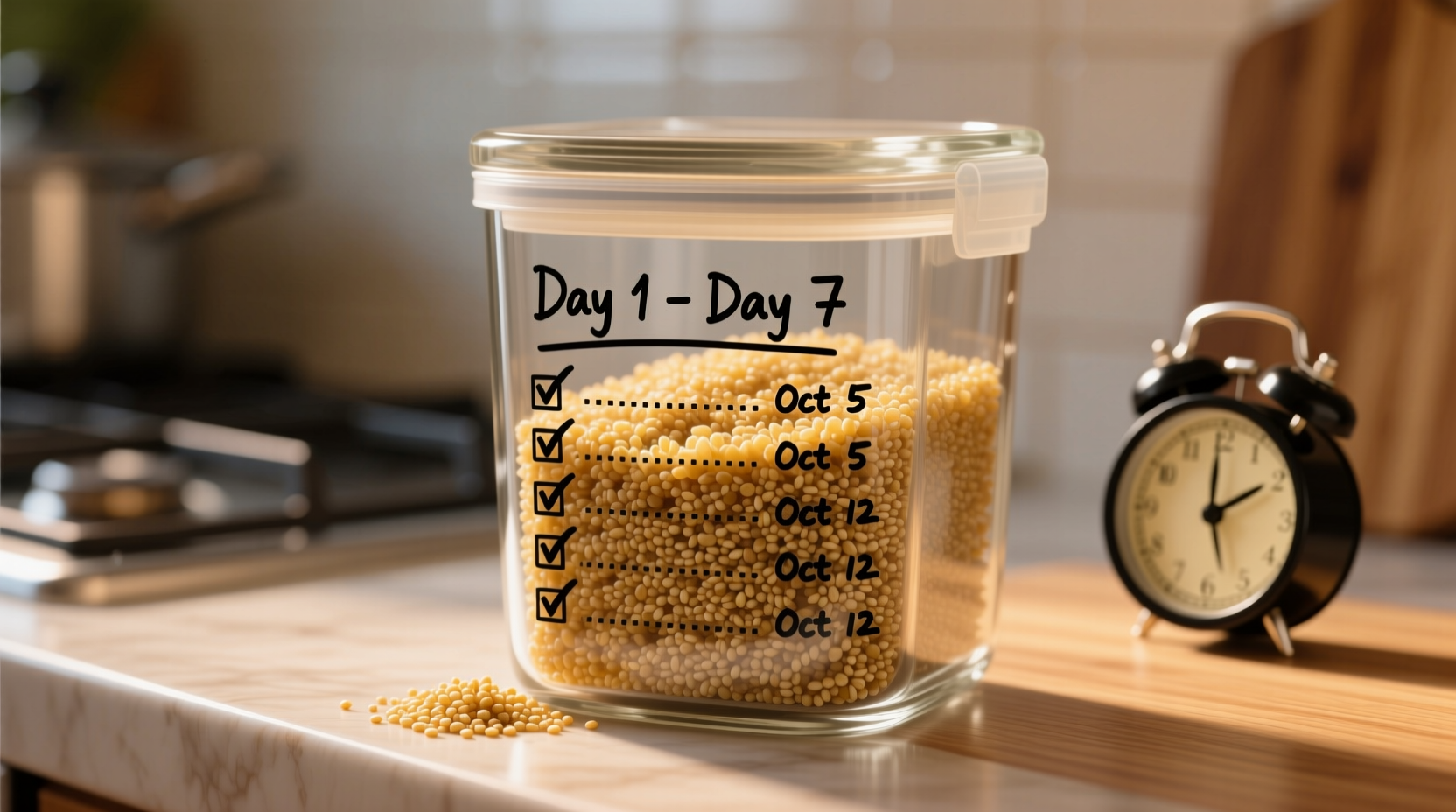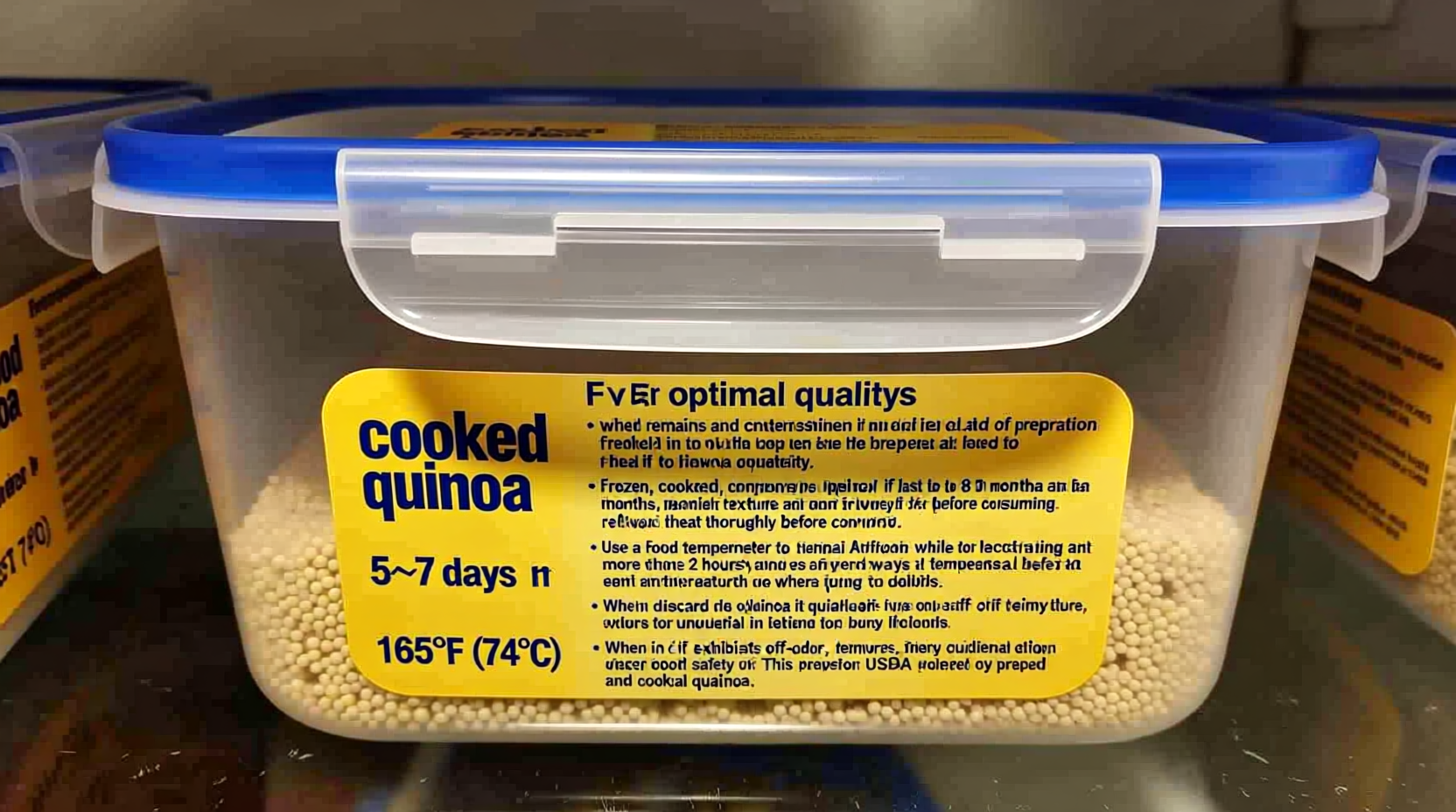Maximize Your Quinoa's Freshness: The Complete Storage Guide
Nothing ruins meal prep plans like discovering spoiled quinoa in your fridge. Proper storage isn't just about convenience—it's crucial for food safety and reducing waste. As a professional chef who's managed kitchen operations from fine dining establishments to food trucks, I've seen how proper grain storage transforms kitchen efficiency. Understanding exactly how long cooked quinoa remains safe and delicious helps you meal prep with confidence while avoiding foodborne illness risks.
Why Quinoa Spoilage Matters More Than You Think
Cooked quinoa creates the perfect environment for bacterial growth—moist, nutrient-rich, and neutral pH. Unlike dry quinoa that lasts indefinitely, cooked grains enter the "danger zone" where bacteria multiply rapidly between 40°F and 140°F (4°C-60°C). The USDA identifies cooked grains as potentially hazardous food requiring strict temperature control. Improperly stored quinoa can harbor Bacillus cereus, the bacteria responsible for "fried rice syndrome"—an often-misunderstood food poisoning that affects thousands annually.
| Storage Method | Optimal Duration | Temperature Requirement | Quality Indicator |
|---|---|---|---|
| Refrigerator (properly stored) | 5-7 days | ≤ 40°F (4°C) | Light, fluffy texture |
| Freezer (airtight container) | 10-12 months | 0°F (-18°C) | No freezer burn |
| Room temperature | 2 hours max | > 40°F (4°C) | Discard immediately |
The Critical Cooling Window: Your First Line of Defense
How you cool cooked quinoa determines its entire shelf life. Never place hot quinoa directly in your refrigerator—that raises the internal temperature and risks spoiling neighboring foods. Instead, spread quinoa in a thin layer on a baking sheet for rapid cooling. This professional kitchen technique reduces temperature from 140°F to 70°F in under 30 minutes, minimizing time in the bacterial danger zone. Once cooled to room temperature (within 2 hours of cooking), transfer to airtight containers. Glass containers with locking lids outperform plastic by preventing odor absorption while maintaining consistent moisture levels.

Refrigeration Protocol: Beyond Basic Storage
Simply placing quinoa in your refrigerator isn't enough. Your fridge's temperature fluctuates significantly—up to 10°F—when the door opens. Store quinoa in the back of the lower shelf where temperatures remain most consistent. Never use containers with loose-fitting lids; moisture loss causes hardening while moisture accumulation promotes mold. For optimal results, add one tablespoon of lemon juice or vinegar per cup of quinoa before storage—the slight acidity creates an environment less hospitable to bacteria without altering flavor.
Freezing Mastery: Preserving Texture and Nutrition
Freezing quinoa properly requires more than just tossing it in a bag. Spread cooled quinoa in a single layer on parchment paper, freeze for 1 hour (flash freezing), then transfer to vacuum-sealed bags. This prevents clumping and preserves individual grain texture. When stored this way, quinoa maintains 95% of its nutritional value for 12 months according to USDA Food Safety and Inspection Service guidelines. Thaw frozen quinoa overnight in the refrigerator for salads, or add directly to soups from frozen—never thaw at room temperature.
Spoilage Detection: What Most Guides Get Wrong
Don't rely solely on expiration dates—your senses provide the most accurate spoilage indicators. Fresh quinoa should smell nutty and earthy. Discard immediately if you detect:
- Any sour or fermented odor (even slight)
- Visible mold spots (often white or green)
- Unusual sliminess or excessive moisture
- Hard, dry texture indicating moisture loss
Remember: "When in doubt, throw it out" isn't just a saying—it's a food safety imperative. The FDA Food Code emphasizes that visual and olfactory checks remain the most reliable indicators for consumers.
Reviving Stored Quinoa: Professional Techniques
Stored quinoa often loses moisture. Restore perfect texture using these chef-approved methods:
- Refrigerated quinoa: Sprinkle with 1-2 tsp water per cup, cover, and microwave 30-60 seconds
- Frozen quinoa: Add directly to simmering broth (1:2 ratio) for 3-5 minutes
- Salad applications: Toss with dressing 15 minutes before serving to rehydrate
These techniques maintain the distinct pop of quinoa grains while restoring optimal moisture balance—something many home cooks struggle with.
Common Storage Mistakes That Shorten Shelf Life
Even careful cooks make these critical errors:
- Storing quinoa while still warm (creates condensation)
- Using containers that aren't truly airtight
- Placing quinoa in the refrigerator door (temperature fluctuations)
- Adding seasonings before storage (alters pH and moisture)
- Freezing in large batches (thawing only what you need)
Correcting just one of these mistakes can extend your quinoa's usable life by 2-3 days according to food safety studies from the University of California's Agriculture and Natural Resources department.
Creative Uses for Leftover Quinoa
Transform stored quinoa into these delicious options before it approaches its expiration window:
- Quinoa breakfast porridge with cinnamon and nuts
- Quinoa veggie burgers (binds better than rice)
- Quinoa-stuffed bell peppers
- Quinoa salad with lemon vinaigrette
- Quinoa pudding with coconut milk
These applications leverage quinoa's versatility while ensuring you use stored grains before quality declines.











 浙公网安备
33010002000092号
浙公网安备
33010002000092号 浙B2-20120091-4
浙B2-20120091-4